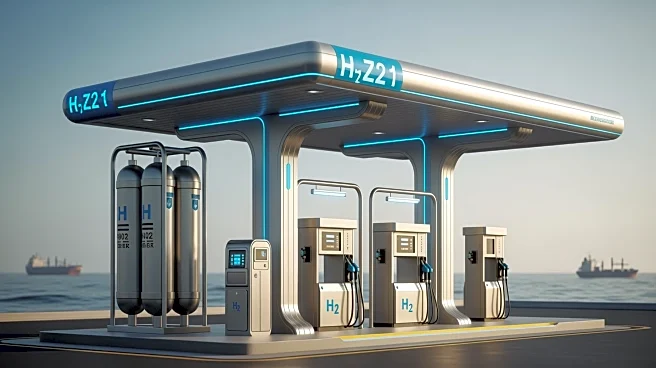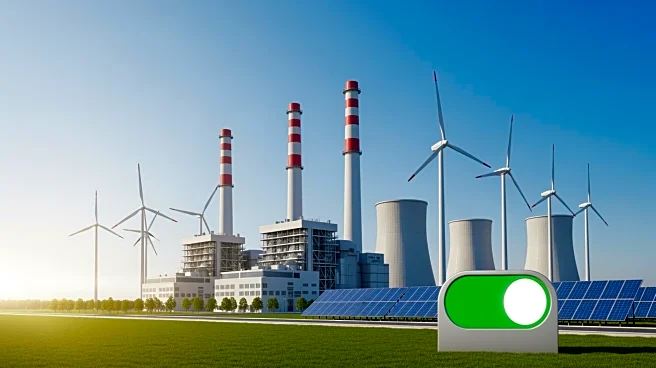What's Happening?
JERA Nex bp, a global offshore wind company, has successfully commissioned a new hydrogen bunkering facility at the Port of Ostend. This facility, known as the Ostend Hydrogen Refueling Station, is designed
to bridge the gap between hydrogen production and its use by maritime users. The station serves as a proof of concept for the potential of hydrogen in decarbonizing offshore wind operations at sea. During its initial demonstration phase in 2025, the station will cater to a hydrogen-powered Crew Transfer Vessel, showcasing the feasibility of hydrogen as a clean energy source for maritime applications.
Why It's Important?
The commissioning of the Ostend Hydrogen Refueling Station marks a significant step towards reducing carbon emissions in the maritime industry. By providing a practical demonstration of hydrogen's viability as a clean fuel, the facility could pave the way for broader adoption of hydrogen in maritime operations. This development aligns with global efforts to transition to sustainable energy sources and reduce reliance on fossil fuels. The success of this project could encourage further investment in hydrogen infrastructure, potentially benefiting industries involved in offshore wind and maritime transport by offering a cleaner alternative to traditional fuels.
What's Next?
As the Ostend Hydrogen Refueling Station enters its demonstration phase, stakeholders in the maritime and energy sectors will likely monitor its performance closely. If successful, the project could lead to the expansion of hydrogen refueling infrastructure in other ports, facilitating a wider transition to hydrogen-powered vessels. This could also prompt regulatory bodies to develop frameworks supporting hydrogen adoption in maritime operations. Additionally, the project's outcomes may influence future investments in hydrogen technology, encouraging more companies to explore hydrogen as a viable energy solution.
Beyond the Headlines
The establishment of the Ostend Hydrogen Refueling Station highlights the growing interest in hydrogen as a key component of the global energy transition. This project not only addresses environmental concerns but also presents economic opportunities by potentially creating new markets and jobs in the hydrogen sector. Furthermore, it underscores the importance of international collaboration in advancing clean energy technologies, as companies and governments work together to achieve shared sustainability goals.











